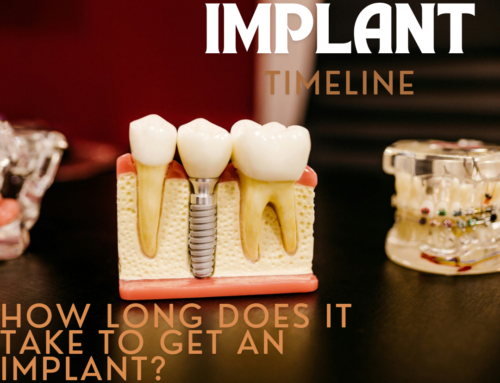To put it simply, a dental implant is an artificially placed root for a tooth. However, the real definition is a medical device surgically implanted into the jaw to serve as a stable foundation for a replacement of a tooth or multiple teeth.
Why you might need an implant:
- Tooth loss: Dental implants are commonly used to replace one or more missing teeth due to reasons such as tooth decay, gum disease, injury, or congenital issues.
- Improved appearance: Missing teeth can affect a person’s smile and facial appearance. Dental implants provide a natural-looking solution that can enhance the aesthetics of the smile and restore facial structure.
- Restoring chewing function: Missing teeth can make it difficult to chew and eat properly, which can impact overall nutrition and health. Dental implants provide a stable foundation for chewing, allowing individuals to eat a wide variety of foods comfortably.
- Preserving jawbone density: When a tooth is lost, the bone that once supported it can begin to deteriorate over time. Dental implants help preserve bone density by stimulating the jawbone and preventing further bone loss.
- Preventing teeth shifting: When a tooth is missing, adjacent teeth may shift into the empty space, causing misalignment and bite problems. Dental implants fill the gap, preventing neighboring teeth from moving out of position.
- Supporting dental prostheses: Dental implants can also be used to support other dental prostheses such as bridges or dentures. Implants provide stability and prevent these prostheses from slipping or moving while speaking or eating.
- Long-term solutions: Unlike traditional dental bridges or dentures, which may need replacement or adjustment over time, dental implants are a durable and long-lasting solution for missing teeth. With proper care, implants can last for many years or even a lifetime.
Overall, dental implants offer numerous benefits for individuals with missing teeth, providing both functional and aesthetic improvements to their oral health and quality of life.
Implant Structure
A dental implant typically consists of several components, each serving a specific function in the implant restoration process. Typically, all Dental Implants are made up of 3 parts:
-
- Implant Fixture: This is the portion of the dental implant that is surgically placed into the jawbone. It resembles a screw or cylinder and is usually made of biocompatible materials, such as titanium. The implant fixture serves as the artificial tooth root, providing stability and support for the replacement tooth or teeth.
- Post or Abutment: The abutment is a connector piece that attaches to the top of the implant fixture. It protrudes from the gum line and provides a platform for attaching the dental prosthesis, such as a crown, bridge, or denture. Abutments can be made of various materials, including titanium, zirconia, or porcelain.
- Prosthesis: A prosthesis can be any form of artificial tooth or teeth that are attached to the dental implant via the abutment. The Prosthesis is custom-made to match the color, shape, and size of the natural teeth to provide a seamless appearance and optimal function. Depending on the number of missing teeth and the patient’s specific needs, the prosthesis can be a single crown, a bridge, or a denture.
-
- Prostheses can be attached to your implant in many different forms depending on if you decide to get a crown, bridge or denture. This process is called implant restoration and you can contact your dentist to discuss the different implant prosthesis options for you.
These 3 components work together to form a complete dental implant system, replicating the structure and function of natural teeth. This allows patients to enjoy restored dental function, improved aesthetics, and enhanced oral health.


